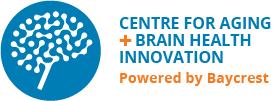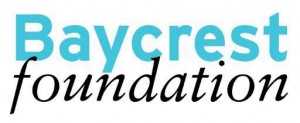Being able to take a casual stroll to a friend’s house or the nearest convenience store is something a lot of us take for granted. But what if you were hesitant to walk for a specific reason – be it physical (for instance, lack of muscle strength) and/or psychological (fear of falling)? Kinesiologist Abby Malott of Tillsonburg, Ontario realized many older adults in her rural community were very much interested in falls prevention classes, but simply couldn’t attend in person.
Rob Doerr can certainly relate to this. The 64-year-old, who uses a motorized scooter, says his fear of falling has grown year by year. “Over the last few years I’ve become increasingly scared of falling, because it’s so hard for me to get up. It’s really hard and quite painful to walk.”
The beginning of Stronger at Home
About four years ago, Abby helped launch a community-based exercise prevention class for Stonebridge Community Services. She was glad they were focusing on preventative health and offering a program that empowered older adults. However, she realized a key group of people was being left out of the service.
“We know that living out in a rural area, there’s quite a few individuals who either can’t – because of transportation or for whatever barrier – attend those classes. Those individuals of course are the ones that are probably most at risk of having a fall or being admitted to the ER. We thought: how are we going to reach these individuals? How are we going to reach into the community and really help those who need it most?”

Abby pictured next to Rob. Photo courtesy of Abby.
Enter Stronger at Home, a falls prevention program with a virtual component that Abby and her team are developing with the support of the Centre for Aging + Brain Health Innovation, led by Baycrest Health Sciences. The program, targeting home-bound seniors, runs for 12 weeks. It starts with a visit to the senior’s home from a volunteer and an occupational therapist. The latter does a comprehensive assessment and works with the client to set personalized goals (anything from getting the mail to feeling strong enough to hold a grandchild). After that, the volunteer takes over, with continued support from Abby and her team.
Rob, who just wrapped up his 12 weeks in the program, says having a volunteer come to his doorstep was key. “Having someone coming over – there’s no excuses,” he laughs. “This person is driving all the way to your house and they’re a volunteer. You can’t say, ‘No, I don’t feel like doing it today.’ So that was really motivating.’”
He adds that the hard work has paid off. “I’ve done some things in the program that I would never have been able to do before. One thing was to walk the length of my driveway. It’s just a town driveway, it’s not very big. But I haven’t been able to walk the length of the driveway in a very long time.”
Adding a social component
In-home falls prevention programs are nothing new – they’re offered throughout Canada and around the world. What is new is the addition of a virtual component.
“There are a lot of programs that just go into the client’s home and work one-on-one with them and do exercises – whether that’s through physiotherapy or even volunteer in-home exercise programs. The difference with our program is we’re connecting these home-bound individuals with their community again – connecting them specifically to the group exercise programs. This way they’re getting the benefit not only of the exercise – which we all know is good for us – but also the social component. It’s just as important if not more important for these individuals to be in a group environment, to be saying hello to different faces every day.”
Indeed, there’s tons of research supporting the benefits of social interaction for seniors. A study published in the American Journal of Public Health, for example, found that older adults with active social lives experience slower rates of memory decline. Another study in the Annals of Family Medicine concluded that social contact and physical activity might even be on equal playing fields for improving quality of life.
What does this virtual layer actually look like?
Abby and her team decided to go with GoToMeeting because of its capability for two-way communication. It’ll allow seniors participating in their home to still feel integrated in the group, which she says is vital.
The team is still working on getting the virtual component up-and-running, but the underlying goal is to offer socialization and motivate seniors to participate in-person whenever possible.
So far, two clients have completed the program and six are in the midst of it. Abby’s in the process of training more volunteers to expand the number of participants. She hopes that down the line, the program can be recreated across multiple communities.
“It’s always surprising to me to see how surprised they are by their progress,” she shares of the seniors’ experience. “I got to do one of the post-assessments with the individuals. To me, it’s just so rewarding to see their excitement and joy out of what they accomplished.”
Rob seconds that. During his final assessment, he was able to walk the length of his hallway without holding onto anything. “Usually when I walk I have to hold onto the wall,” he explains. “I walked one length of the hallway without having to hang onto anything. It might not seem like much, but it’s quite an achievement for me. It’s definitely given me more confidence and a sense of ‘Yes, I can do more than I thought I could.’ ”


